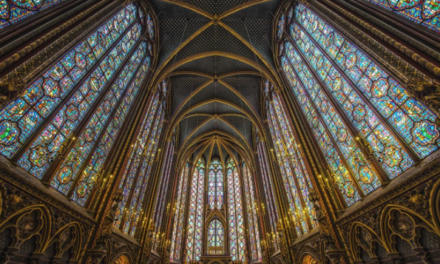Characteristics of this type of shot: Glassy, still water; a beautiful gradient of colors in the sky; and a wide, interesting vista.
(1) The key to this shot is when you shoot it. This type of shot needs to be taken before sunrise, not just for the quality of light, but perhaps more importantly, to get the glassy, still water. The best time for this is at dawn. About an hour later and, in most cases, that water won’t be still and glassy anymore.
(2) While the sky does have a nice color gradient, it has something really important missing—clouds. Clouds are what make the sky interesting, so when you have a bald, cloudless sky like this, compose the shot so the horizon line is up in the top third of the frame. That way, you don’t show much of the sky at all.
(3) In low dawn light like this, you need to, of course, shoot on a tripod and use a cable release or your camera’s self-timer to minimize any camera shake. Because you’re on a tripod, you can shoot at your lowest ISO (here, that was 100 ISO) to minimize any noise.
(4) You’ll need to use a wide-angle lens to capture this wide a view (this was taken with a 14–24mm f/2.8 lens set at 14mm).
(5) This is another one of those occasions where you want to use a high f-stop number to keep as much in focus, front to back, as possible. I used f/22 (my go-to f-stop for landscapes).
(6) For a landscape shot to be successful, you need a strong foreground element (like these rocks, and to accentuate them, I put my tripod way down low).
Excerpt from Scott Kelby’s The Digital Photography Book, part 2.






